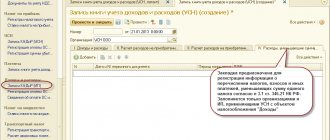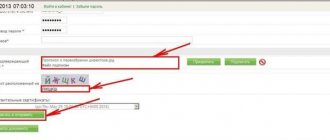The main reasons for closing an individual entrepreneur include not only a voluntary decision of the entrepreneur, a court decision on the forced liquidation of the individual entrepreneur, or declaring the entrepreneur bankrupt. Recently, individual entrepreneurs are increasingly looking at a special tax regime for the self-employed - the tax on professional income. If their income does not exceed 2.4 million per year, then they decide to close their individual entrepreneurs and become officially self-employed.
- Typical mistakes when closing an individual entrepreneur
- How to close an individual entrepreneur without employees
- Stages of closing an individual entrepreneur with employees
- When do you need a lawyer’s help in closing an individual entrepreneur?
- How to close an individual entrepreneur during a pandemic
Choosing a method for closing an individual entrepreneur
There are two ways to close an IP:
- Independent closure of an individual entrepreneur. A fairly simple procedure, which consists of preparing a number of documents and performing some preparatory procedures (paying taxes, fees, dismissing employees, etc.). In addition, by going through all the steps of closing an individual entrepreneur on your own, you will gain invaluable experience that may be useful to you more than once.
- Paid closure of individual entrepreneurs through a specialized company. Suitable for those who want to save their time and do not want to delve into the process of closing an individual entrepreneur on their own.
How much does it cost to close a sole proprietorship?
Close the IP yourself
| What do we pay for? | Price | the total cost |
| State duty for closing an individual entrepreneur | 160 rub. | from 160 to 1500 rub. |
| Notarized power of attorney for a representative (optional) | 1000-1500 rub. |
Close an individual entrepreneur for a fee through a specialized company
The cost of paid closure of an individual entrepreneur depends on the region, but usually ranges from 1,000 to 5,000 rubles.
The state fee for closing an individual entrepreneur, as a rule, is not included in this amount. Note
: the cost does not take into account the costs of taxes and fees, contributions, fines that may need to be paid, as well as the costs of settlements with employees (if any).
Comparison of independent and paid closure of individual entrepreneurs
| Closing method | Advantages | Flaws |
| Independent closure of an individual entrepreneur | Useful experience in preparing documents and communicating with government agencies. Saving money on paid services from law firms. | Possible refusal to close an individual entrepreneur due to errors in prepared documents. The result is a loss of time and money. BUT, if you follow these instructions and carefully prepare documents, the risk of refusal is reduced to 0. |
| Paid closure of individual entrepreneurs through a law firm | The specialized company assumes the risk of refusal to close the individual entrepreneur. Preparation, submission and receipt of documents from the tax service are possible without your participation. | Additional expenses. Transfer of personal data to third parties. You will have a poor understanding of the procedure for closing an individual entrepreneur. |
We carry out preparatory actions
Before its closure, according to the law, an individual entrepreneur must fulfill only the first two points; he can fulfill the rest after cessation of activity. But in practice, tax authorities often require that all the actions described below be performed at once.
Payment of taxes, fines and penalties to the Federal Tax Service
At this stage, you need to know exactly what amounts of taxes, fines and penalties you need to pay. Directly, the amount of taxes payable depends on the tax system on which the individual entrepreneur is located. You can obtain accurate information about existing debts and overpayments of taxes, fees and fines by reconciling settlements with the tax authority.
You can read more about individual entrepreneur taxes on this page.
Dismissal and full settlement with employees (if any)
In this case, the individual entrepreneur must by law:
- notify your employees in writing of the upcoming dismissal at least two months before closure;
- two weeks before closing, notify the Employment Service in writing;
- make full payments to employees;
- pay all necessary taxes and payments for employees;
- submit all required reporting for employees;
- after dismissal of all personnel, deregister with the Social Insurance Fund.
Paying insurance premiums “for yourself”
The exact amount of insurance premiums can be calculated if you know the closing date of the individual entrepreneur (to calculate, you can use this free online service on this website). Therefore, it is more convenient to pay for them after the termination of business activity (but no later than 15 calendar days from the date of making an entry in the Unified State Register of Individual Entrepreneurs). However, in practice, sometimes tax authorities illegally require payment before closing. In this case, the individual entrepreneur has four options:
- try to explain that these demands are unlawful and (or) demand a written request for payment of contributions and justification for the refusal to close the individual entrepreneur on this basis;
- send documents to close an individual entrepreneur by mail (in this case, the likelihood of refusal for this reason is minimal);
- still pay insurance premiums before closing the individual entrepreneur;
- file a complaint about unlawful actions (inaction) of tax authority officials to a higher authority (FTS).
Since 2011, the Federal Tax Service must independently request a certificate from the Pension Fund. However, if you still need a certificate for the debt, then you need to go with the documents to the Pension Fund of the Russian Federation and write an application to close the individual entrepreneur, then if, when calculating on the expected closing date, you get a debt, you should be given receipts, after which you can receive it.
Submission of all declarations, including those for an incomplete period
The exact deadline for submitting a tax return when closing an individual entrepreneur is not specified in the Tax Code of the Russian Federation, and therefore different Federal Tax Service Inspectors can interpret it in their own way: before closure, within 5 days after closure, or generally within the usual time frame. Therefore, an individual entrepreneur needs to clarify this issue with the Federal Tax Service at the place of registration.
Read about how to fill out a UTII liquidation declaration when closing an individual entrepreneur here.
Deregistration from the Social Insurance Fund
Only individual entrepreneurs who have employees are required to register with the Social Insurance Fund. However, some individual entrepreneurs independently register with the Social Insurance Fund (for example, those who are often sick, going on maternity leave, etc.).
From June 11, 2021, there is no need to notify the Social Insurance Fund of termination of activities. Individual entrepreneurs will be deregistered with the Social Insurance Fund based on data sent to the tax office. At the same time, if an individual entrepreneur has debts to the Social Insurance Fund, this will not affect the withdrawal procedure in any way.
Closing an individual entrepreneur's current account
After receiving your last non-cash payments and paying all necessary taxes and insurance premiums, you should close your bank account. The balance can be withdrawn or transferred to any bank to another account, which can be specified when filling out the application.
From May 2, 2014, the obligation to notify about the closure (opening) of a current account in a bank has been abolished. Before May 2, the individual entrepreneur had to independently notify within 7 days: the tax service, the Pension Fund of Russia, the Social Insurance Fund (for individual entrepreneurs registered with it).
Deregistration of cash register equipment
Note! From July 2021, there is no need to deregister cash registers when terminating the activities of an individual entrepreneur. As soon as information about the deregistration of an entrepreneur appears in the Unified State Register of Individual Entrepreneurs, the online cash register is unilaterally deregistered by the tax authority. However, at the time of closing, it is necessary to ensure the transfer of all fiscal documents to the Federal Tax Service. It is necessary to deregister a cash register only if it is planned to be transferred to another person.
In accordance with Law 54-FZ of March 22, 2003, companies and individual entrepreneurs are required to use cash register systems when making payments for goods, work or services. Individual entrepreneurs on OSNO and simplified tax systems were supposed to switch to new cash registers from 2017, but in the service sector a deferment was provided. Individual entrepreneurs on a patent have been using cash register equipment since July 1, 2021. However, there is an exception - these are entrepreneurs who do not hire employees and are not engaged in retail trade. They can work without cash register until mid-2021, regardless of the tax system.
Note. It is prohibited to use old-style cash register equipment in 2021.
If you decide to deregister the cash register (so that it can be registered to another person), you will need:
- Fill out an application for deregistration of the online cash register and, within one business day from the date of occurrence of the circumstances in connection with which deletion was required, send it to the Federal Tax Service (to any tax office in paper form, through the personal account of the cash register, or through the OFD). Additionally, you need to provide a report on the closure of the fiscal drive.
- Receive a card about deregistration of the cash register. The deadline for generating a Federal Tax Service card is 5 working days from the date of application. After another 5 working days, you will be sent an up-to-date card through the CCP or OFD office (if desired, you can request a paper copy from the tax office).
Read more about how to deregister an online cash register in this article.
Invoice
An invoice is an important document for VAT payers. This tax is paid by individual entrepreneurs (and companies) that apply the main tax regime. When applying the simplified tax system, UTII, unified agricultural tax (until 2019) and the patent system, VAT is not paid (although there are exceptions to this rule). Therefore, if an individual entrepreneur uses one of the special modes, he should not generate an invoice. Moreover, if, at the buyer’s request, he issues an invoice and allocates the amount of VAT in it, he will be obliged to pay this tax to the budget and file a declaration .
Individual entrepreneurs - VAT payers are required to issue an invoice. This must be done no later than 5 days after shipment of the goods. The document is drawn up in 2 copies - one each for the buyer and the seller.
If an individual entrepreneur is a VAT payer, it is also important for him to receive invoices from his suppliers in a timely manner, since this document is the basis for his application of VAT deduction .
We prepare the necessary documents for closing an individual entrepreneur
Application for closure of individual entrepreneur
An application in form P26001 is the main document required to terminate the activities of an individual entrepreneur (). Detailed instructions for filling out, as well as application samples relevant for 2021, can be found on this page.
From November 25, 2021, the termination of individual entrepreneurial activity must be declared using a new form.
Receipt for payment of state duty
In 2021, the state duty for closing an individual entrepreneur is 160 rubles
. You can generate a receipt and also pay for it online using this service on the official website of the Federal Tax Service (section State duty for registration of individual entrepreneurs). There you can print out a paper receipt and pay for it at any convenient Sberbank branch.
Learn more about paying state fees.
We submit documents to the tax office
The collected documents must be submitted to the tax authority that registered it (for example, in Moscow this is Federal Tax Service No. 46), and not to the one where it was registered (this does not apply to paying taxes and submitting reports). You can find out the address and contact information of your tax office using this service.
When independently submitting documents to the Federal Tax Service, an individual entrepreneur does not need to certify the signature on the application. However, when submitting documents through an authorized representative or sending documents by mail (necessarily with a declared value and an inventory of the contents), notarization is required.
When submitting documents remotely to the Federal Tax Service, you will need an electronic signature. Read our article about which specific digital signature to choose for an individual entrepreneur.
In March 2021, the Federal Tax Service finalized the electronic service “State registration of legal entities and individual entrepreneurs”. This is due to the COVID-19 coronavirus pandemic. Through the service, you can send applications for closing an individual entrepreneur to the registration authority in electronic form without using an electronic signature. The application is accompanied by a scanned image or photograph of the pages of the passport with information about the issue of the document, series and number, as well as a photo (selfie) with an open passport.
An invoice for payment
In fact an invoice for payment is more of a convenience document than a document necessary for accounting. It contains information about the quantity/volume and cost of goods or services to be paid. Typically, an invoice is sent to the buyer - a legal entity or individual entrepreneur - for payment by “non-cash” payment, that is, through a bank.
The invoice form can be developed by the entrepreneur independently. Below is one of the possible forms, which is quite often used by business entities.
Sample invoice
By the way, there is a document that combines an agreement and an invoice for payment. That's what it's called - an invoice agreement . In essence, this is an account in which the mandatory terms of the contract are entered (they are called essential). A sample of it is presented below.
Sample invoice agreement
After the closure of the IP
Please note that:
- an individual is not exempt from paying taxes, fines, insurance premiums and other debts incurred during his activities as an individual entrepreneur;
- if any of the actions described above to prepare for the closure of the IP have not been completed, then after closure they must be completed as quickly as possible;
- if there is an IP seal, its destruction is not necessary;
- if necessary, an individual entrepreneur can be opened again immediately after closure (for example, for a quick transition to another taxation system).
Acceptance certificate
Acceptance certificates for work performed or services provided are important primary documents. They confirm the fact that the service was performed (the work was completed), as well as the fact that the customer accepted them and has no claims against the contractor.
The act is drawn up in two copies and signed by both parties. From the name it is clear that this document is drawn up based on the results of the performer’s work . If the cooperation is long-term and services are provided frequently, the act can be drawn up periodically. For example, the contract is concluded for a year, the service is provided once a week - in this case, the act can be drawn up once a month.










